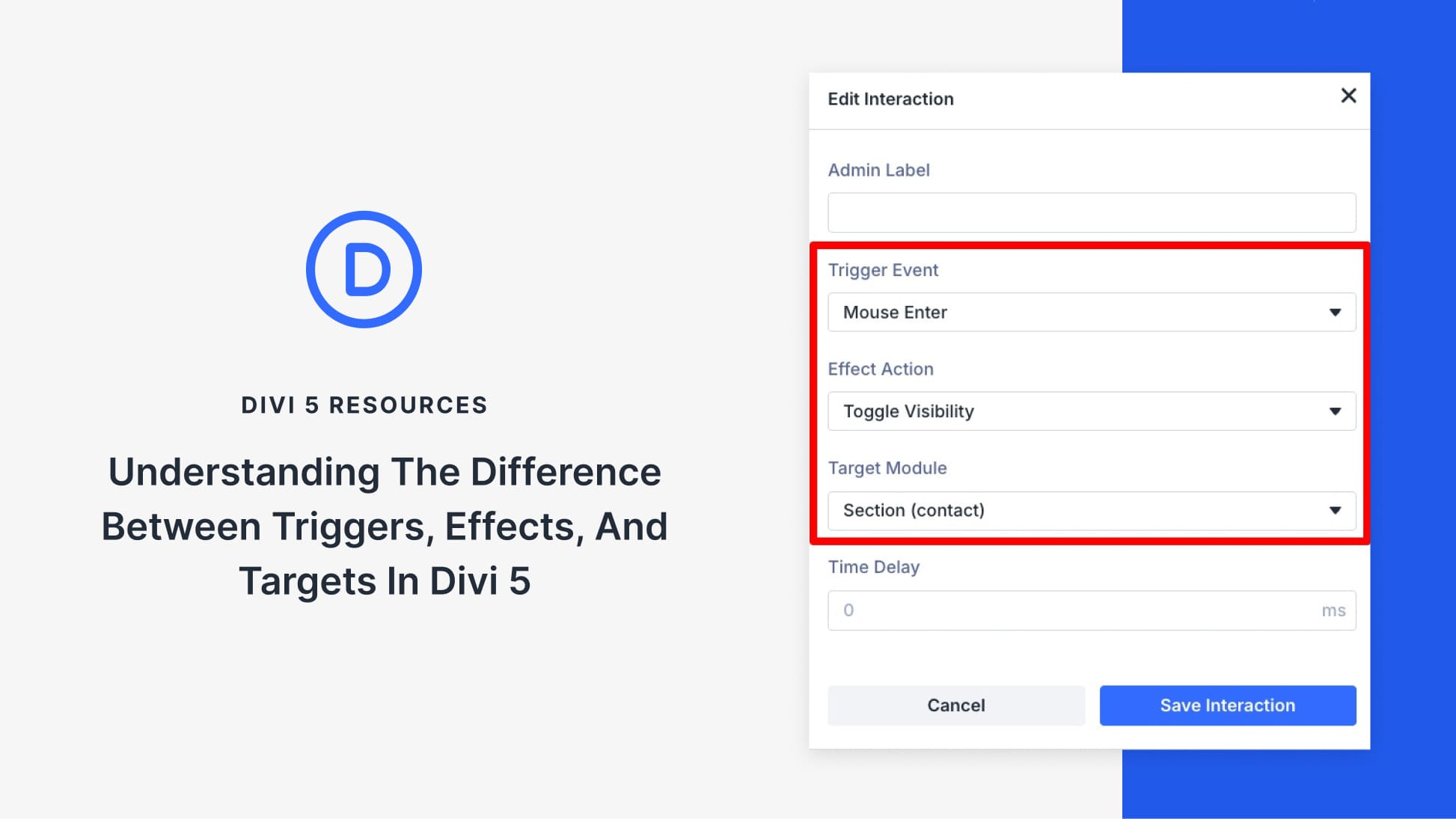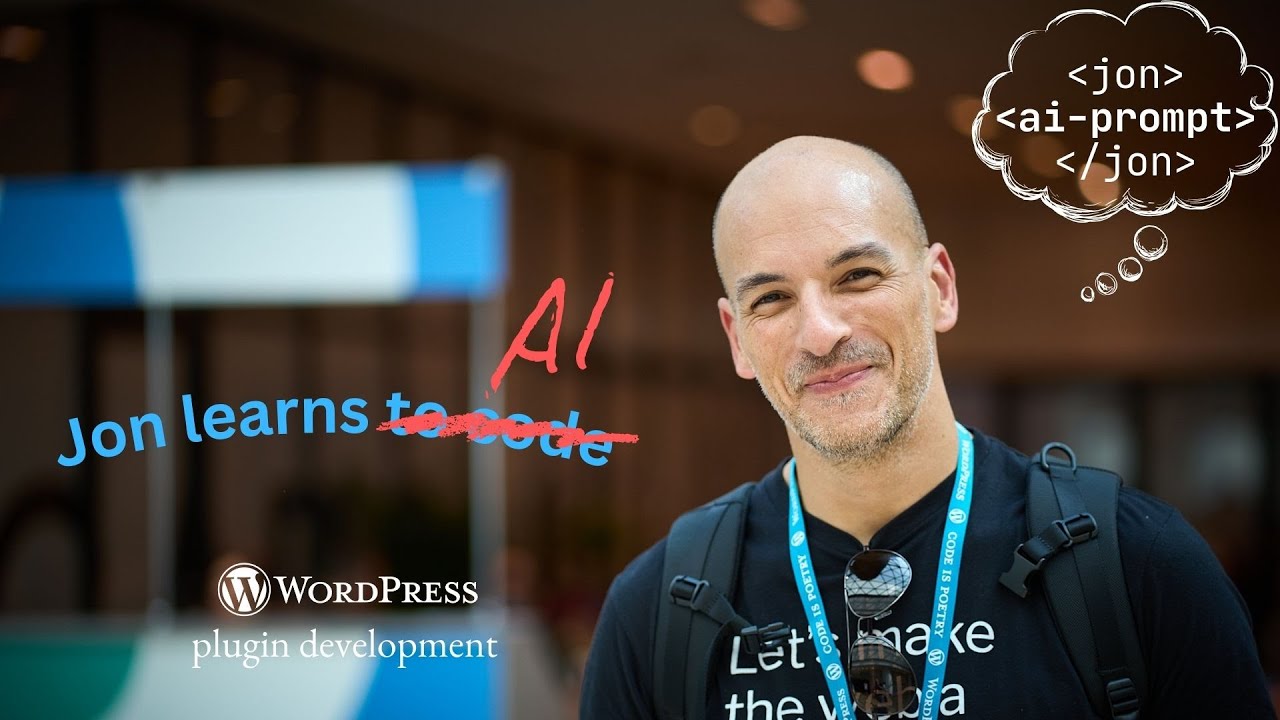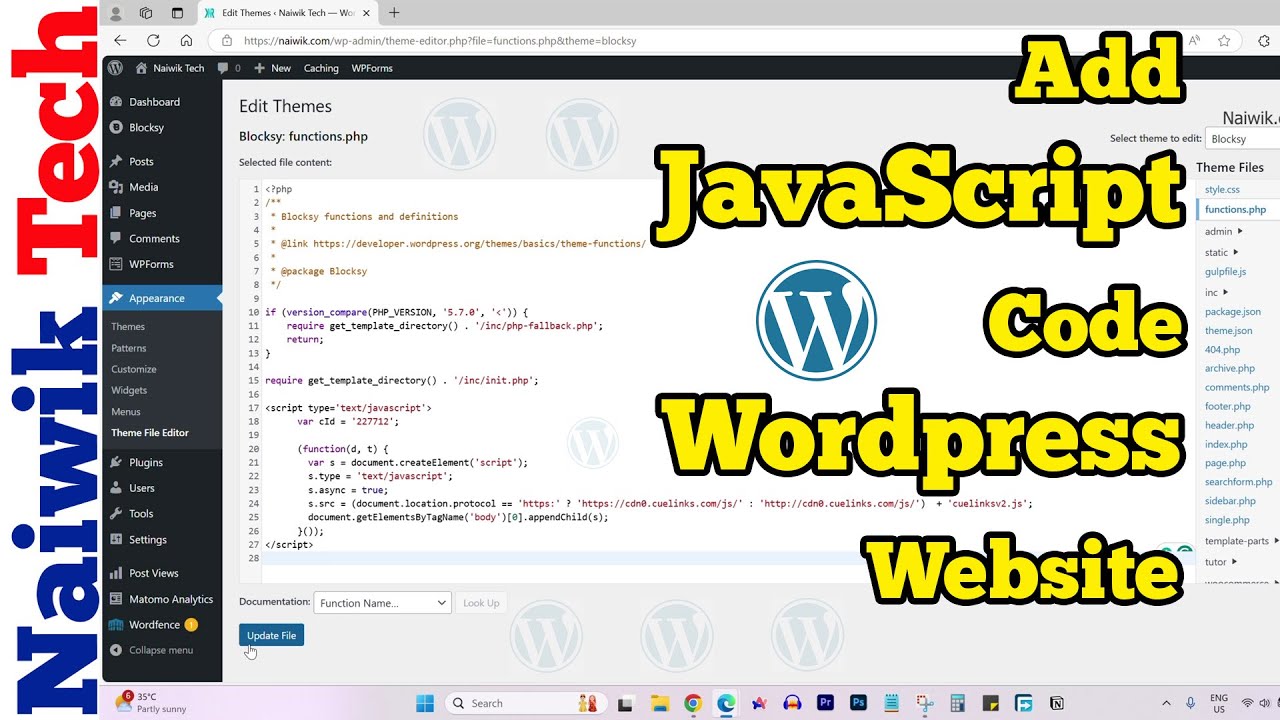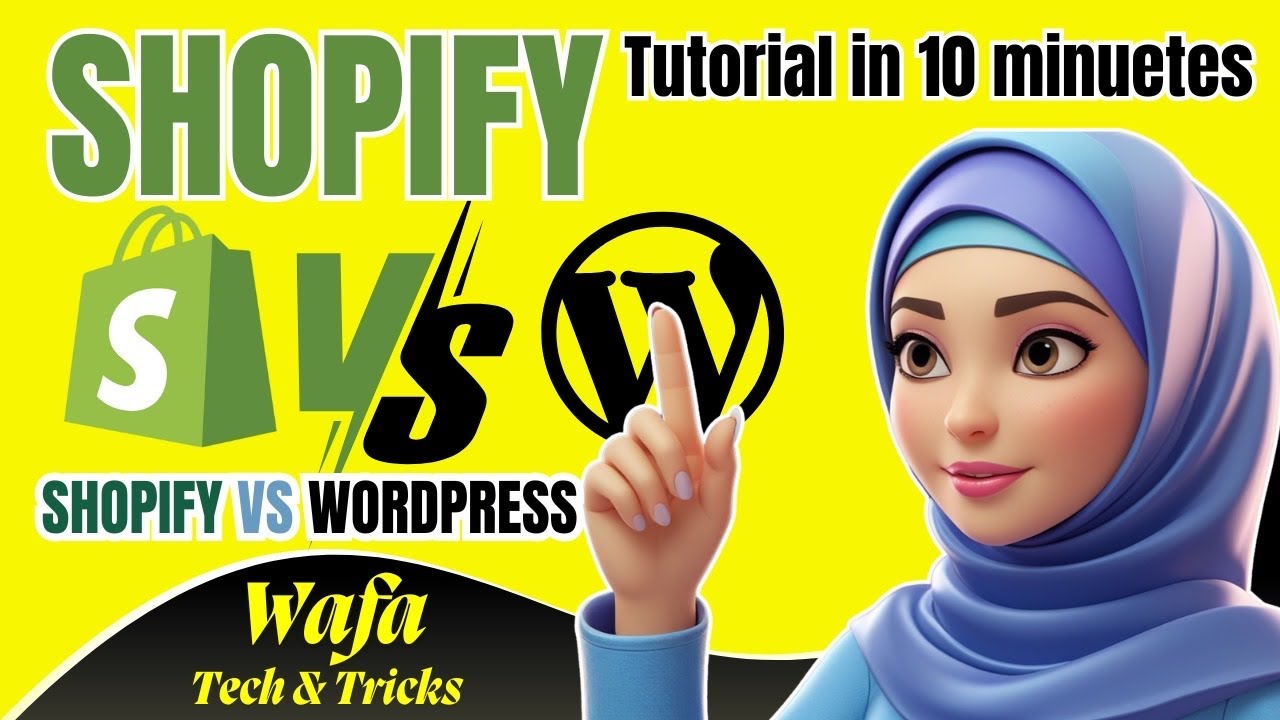Blog
Understanding The Difference Between Triggers, Effects, And Targets In Divi 5

A Comprehensive Guide to Triggers, Effects, and Targets in Divi 5
The world of web design is constantly evolving, and Divi 5 is a powerful tool that allows developers and creators to enhance their websites with dynamic effects. As you delve into this platform, it’s essential to grasp the key concepts of triggers, effects, and targets. Understanding these elements will help you utilize Divi 5 to its full potential, elevating the user experience on your website.
What Are Triggers?
Triggers are the events that initiate actions on your website. In Divi 5, triggers can be set to respond to various user interactions or behaviors. These events can range from simple actions such as mouse movements and clicks to more complex behaviors like scrolling down a page or exiting a viewer’s viewport.
Types of Triggers
-
Mouse Events
- Click Trigger: Activates an action when the user clicks on an element, such as a button or image.
- Hover Trigger: Initiates an effect when users hover their cursor over a specific area, allowing for interactive elements.
-
Scroll Events
- Scroll Down Trigger: Fires when a user scrolls down, enabling on-screen text or animations to appear dynamically as they move through a page.
- Scroll Up Trigger: A reverse action that can bring elements back into view as a user scrolls back to the top.
- Page Load Trigger
- This trigger activates effects as soon as the page loads, making it useful for displaying introductory animations or guiding users toward essential actions.
Understanding these triggers allows you to weave interactivity into your website, making it a more engaging environment for visitors.
What Are Effects?
Once a trigger is activated, it’s time to consider the effects. Effects are the visual or functional responses that occur as a result of a trigger initiating an action. In Divi 5, effects can be versatile, ranging from subtle animations to dramatic transitions.
Types of Effects
-
Animations
- Fade In: Elements gradually become visible, creating a smooth entrance effect that captures attention.
- Slide In: Content appears by sliding into view from a designated direction, providing a dynamic entrance that enhances user engagement.
-
Transformations
- Scale: This effect enlarges or shrinks an element to focus user attention or create visual interest.
- Rotate: Rotational movements can bring a playful aspect to your site, making it visually captivating.
- Visibility Changes
- Show/Hide: Elements can be revealed or concealed based on user interaction, providing a cleaner, more organized space.
Understanding how to incorporate these effects can significantly improve the visual appeal of your website, thus keeping the audience engaged and encouraging exploration.
What Are Targets?
Targets represent the specific elements on your website that will respond to the triggers. Clearly defining your targets is crucial for ensuring your triggers and effects work harmoniously. In Divi 5, the ability to specify targets allows for precise control over user interactions.
Choosing Your Targets
-
Specific Elements
- You can select elements like buttons, images, or content blocks to act as targets for your triggers, enabling you to customize which sections respond to user actions.
-
Grouping Elements
- Creating a group of elements as a single target can be beneficial for coordinated responses. For example, triggering a fade-in effect for multiple images when the user scrolls down can create a cohesive visual narrative.
- Dynamic Targets
- Dynamic content, such as user-generated data or form entries, can also be used as targets. This adds a layer of interactivity, making your site feel alive and personalized.
Combining Triggers, Effects, and Targets
To create a cohesive and engaging user experience on your website, it’s essential to understand how to effectively combine triggers, effects, and targets. Here’s a streamlined approach to achieving this:
-
Identify User Behaviors
- Start by analyzing your audience’s most common actions on your website. Knowing how they interact allows you to strategically place triggers.
-
Match Triggers with Effects
- Once you’ve identified which actions you want to utilize as triggers, think about the most suitable effects to make those triggers impactful. For example, a click on a "Learn More" button could lead to a slide-in effect for additional information.
-
Define Clear Targets
- Be specific about which elements you want to engage with your triggers and effects. This clarity will improve the overall user experience and ensure that your interactions feel relevant and purposeful.
- Test and Refine
- After implementing your triggers, effects, and targets, conduct A/B testing to evaluate their effectiveness. Adjust based on user feedback and interaction data to refine the experience continuously.
Best Practices for Using Triggers, Effects, and Targets
To maximize the effectiveness of your design elements in Divi 5, consider the following best practices:
-
Keep It Subtle: While eye-catching animations can enhance a design, overusing them can overwhelm users. Aim for a balanced approach that captures attention without causing distractions.
-
Be Consistent: Maintain consistency in your triggers and effects throughout your site. This uniformity supports a smoother navigation experience and reinforces your brand identity.
-
Optimize for Performance: Heavy animations can slow down website loading times. Always optimize your visuals to ensure a smooth user experience.
- Accessibility Matters: Ensure that your interactive elements are accessible to all users, including those who use screen readers or keyboard navigation.
Conclusion
Mastering the concepts of triggers, effects, and targets in Divi 5 can significantly enhance your website’s user experience. By understanding how these elements work together, you can create a dynamic and engaging online presence that resonates with your audience. Embrace these principles, experiment with different combinations, and watch as your website transforms into an interactive masterpiece that captivates and retains visitors.
Elementor Pro
In stock
PixelYourSite Pro
In stock
Rank Math Pro
In stock
















